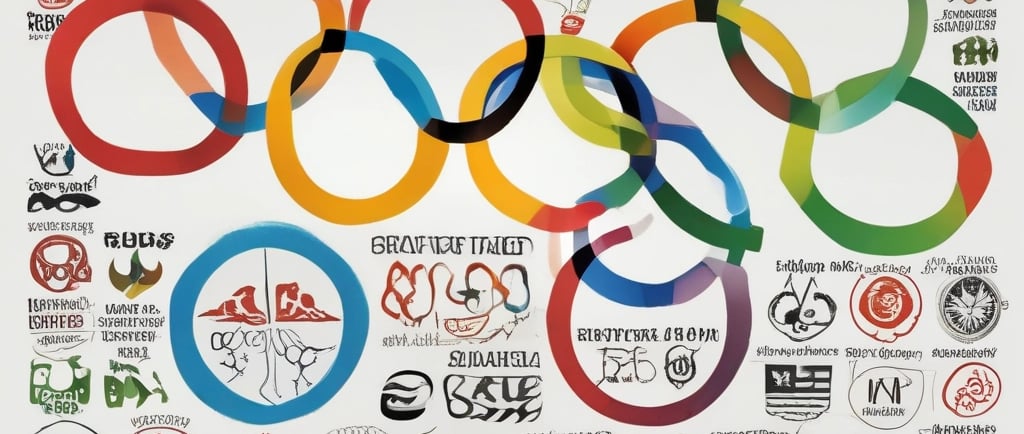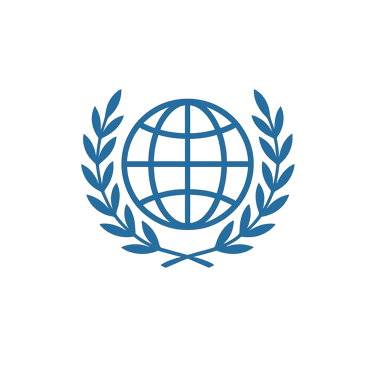Understanding Martial Arts Governance: Recognized and Non-Recognized Organizations
Discover how martial arts are governed globally, exploring the roles of recognized and non-recognized organizations in shaping standards and competition.


Introduction to Martial Arts Governing Bodies
The landscape of martial arts is vast and diverse, encompassing a wide range of disciplines and styles, each with its own set of traditions and practices. Central to this ecosystem are martial arts governing bodies, which play a crucial role in organizing competitions, establishing regulations, and promoting fair play among practitioners. These organizations are essential for the development of martial arts, as they ensure that competitions are conducted in accordance with standardized rules, ultimately contributing to the sportsmanship and integrity of the practices involved.
Recognition by prominent international organizations such as the International Olympic Committee (IOC) and the World Anti-Doping Agency (WADA) significantly influences the standing of martial arts globally. The IOC's endorsement allows particular martial arts to be featured in the Olympic Games, which elevates their visibility and attracts participants and fans alike. This recognition brings with it a level of legitimacy that can enhance funding opportunities, sponsorships, and overall growth within the sport. Similarly, WADA’s involvement is pivotal in maintaining the integrity of competitions by ensuring that all athletes adhere to fair play standards, particularly concerning anti-doping regulations.
Furthermore, when a martial arts organization achieves recognition from global bodies, it facilitates standardized training and competition protocols across different regions. This standardization is vital as it fosters a sense of unity and collective progress among practitioners from various backgrounds. In essence, governing bodies serve not only to regulate but also to promote the discipline and respect inherent in martial arts. Their influence extends beyond local borders, impacting the global martial arts community's structure and operations, and ultimately enhancing the experience of athletes involved in the sport.
World Taekwondo: A Model of Recognition
World Taekwondo (WT) serves as a prime example of a recognized governing body in the realm of martial arts, having gained acknowledgment from both the International Olympic Committee (IOC) and the World Anti-Doping Agency (WADA). Founded in 1973, WT has played a pivotal role in formalizing the sport of taekwondo, ensuring it adheres to international standards and practices. The organization's development was crucial in establishing taekwondo as an Olympic sport, which finally occurred at the Sydney 2000 Olympic Games. This milestone was not merely an achievement but a validation of taekwondo’s global appeal and rigorous competitive framework.
WT's recognition by the IOC not only lends credibility to the sport but also fosters significant development opportunities for athletes across the globe. Being an Olympic sport attracts young talents, increases participation at grassroots levels, and motivates practitioners to achieve higher skill levels. Recognition by WADA further emphasizes WT's commitment to maintaining fair play and promoting clean sports. The stringent anti-doping regulations implemented by WT ensure that the pathways to Olympic competition are open to all athletes, thereby enhancing the legitimacy of taekwondo competitions.
Moreover, WT actively organizes high-profile events, such as the World Taekwondo Championships and the Grand Prix series, which are internationally recognized competitions that elevate the visibility of the sport. Such events not only showcase the talents of elite athletes but also create a platform for camaraderie among competitors from different countries. This model of recognition and governance reinforces WT's efforts to promote taekwondo as a respected and popular sport worldwide. Through its structured approach to competition and athlete welfare, WT has undeniably contributed to the global growth and acceptance of taekwondo as an integral martial art discipline.
The Fragmentation of ITF Taekwondo
The International Taekwondo Federation (ITF) has a long and rich history, having been established in 1966. However, unlike the World Taekwondo (WT), which enjoys international recognition and a unified structure, ITF has experienced considerable fragmentation over the years. This fragmentation can largely be attributed to political divisions within its leadership and differing interpretations of taekwondo practices. Various factions have emerged, each claiming legitimacy, which has led to a lack of cohesive governance in ITF.
One of the primary reasons for the fragmentation within ITF is the ideological schisms surrounding the martial art's technical and philosophical aspects. Different branches of ITF have developed unique curricula, sparring styles, and governing practices, which reflect varied interpretations of taekwondo. For instance, some factions prioritize traditional forms and self-defense techniques, while others focus on more competitive aspects. This divergence often leads to conflicts that impede the formation of a united front, ultimately hindering ITF’s recognition by broader sporting authorities.
The implications of this fragmentation are significant, particularly for athletes who practice under the ITF banner. Without the backing of a globally recognized organization, these athletes may face challenges when competing at international events. Many competitions affiliated with ITF are not recognized by major sport governing bodies, limiting the opportunities for participants to gain experience and exposure on larger platforms. Furthermore, this lack of recognition can affect the athletes' eligibility for national funding, sponsorships, and career advancement opportunities. Consequently, the disunity within ITF not only impacts the organization itself but also the athletes who embody its spirit and practice.
Karate's Dual Landscape: WKF vs. Other Federations
Karate, a martial art with roots deeply embedded in history, has evolved into a structured competitive sport governed by various organizations worldwide. The World Karate Federation (WKF) stands as the predominant governing body recognized by the International Olympic Committee (IOC). This recognition plays a pivotal role, particularly with the growing prominence of karate in global sporting events, including the Olympics. As the official body for karate, the WKF establishes rules, organizes competitions, and promotes the sport on an international stage, providing athletes with opportunities to compete at the highest levels.
Contrasting with the WKF are other notable organizations such as the World Union of Karate-Do Federations (WUKF) and the World Karate Commission (WKC). These federations prioritize traditional karate styles and often emphasize different aspects of training, technique, and competition formats. While they play significant roles in nurturing grassroots karate development and catering to various styles, they lack the official recognition from the IOC, which can limit their athletes' exposure to elite-level competitions. This difference in recognition can profoundly affect athletes’ careers, impacting their chances to represent their countries in prestigious international competitions.
The division between these federations has important implications for karate practitioners. Those under the WKF umbrella often have access to a more extensive network of competitions, sponsorships, and visibility in the sport. In contrast, athletes affiliated with organizations like the WUKF and WKC may find themselves championing traditional forms and values, yet they may face challenges in gaining widespread recognition and support. This dynamic creates a dual landscape within the karate community, where both traditional practices and modern competitive approaches coexist, catering to varied interests and philosophies within the martial arts domain.
Kickboxing Organizations: A Tale of Provision and Separation
Kickboxing, a dynamic and widely-practiced combat sport, is governed by various organizations that shape its structure and competitive standards. Among these bodies, the World Association of Kickboxing Organizations (WAKO) stands out due to its provisional recognition by the International Olympic Committee (IOC). This recognition signifies a substantial step towards the integration of kickboxing into the Olympic framework, albeit the full inclusion remains a complex endeavor. WAKO's recognition is pivotal as it offers a platform for fostering the sport's global development and ensures athletes are subject to consistent regulatory standards.
In contrast to WAKO, other prominent organizations, such as the International Sport Kickboxing Association (ISKA) and the World Kickboxing Association (WKA), operate independently and maintain their own sets of rules and regulations. This independence can lead to significant variations in competition formats, scoring systems, and athlete safety protocols. For example, the ISKA may employ different weight classes and bout durations compared to WAKO, resulting in a lack of uniformity within the sport. This fragmentation can create confusion among athletes, coaches, and fans, as there is no single standard governing all competitions.
The absence of a unified governing framework can have far-reaching consequences for kickboxing. For athletes, competing in varied organizations can lead to discrepancies in training expectations and the level of competition. Additionally, without a cohesive regulatory body, enforcing consistent safety measures becomes challenging, increasing the risk of injuries. Moreover, the differing organizational structures can hinder the sport's growth, as prospective athletes and fans may find it difficult to navigate the complexities of competing rules and organizations. Addressing these issues will be essential for the future of kickboxing as a globally recognized sport.
Muay Thai's Recognition and Challenges
Muay Thai, often referred to as the "Art of Eight Limbs," is a martial art that has garnered widespread popularity across the globe. Central to its international recognition is the International Federation of Muaythai Associations (IFMA), which has played a pivotal role in standardizing practices and promoting the sport. In 2016, IFMA achieved recognition from the International Olympic Committee (IOC), a significant milestone that underscores its legitimacy and potential for inclusion in the Olympic Games. This official status provides a structured framework for competitions and enhances the prospects for athletes aspiring to showcase their skills on an international stage.
However, alongside IFMA, there exist other organizations such as the World Muay Thai Federation (WMF) and the World Professional Muaythai Federation (WPMF). While these bodies prioritize the preservation of traditional values and forms of muay thai, they lack the same level of international recognition as IFMA. This discrepancy brings to light the challenges faced by athletes and promoters attempting to navigate the cluttered landscape of muay thai governance. Without universal guidelines and support from a recognized authority, practitioners may encounter difficulties in accessing opportunities for competition or funding.
Moreover, the divide between recognized and non-recognized organizations poses a dilemma for competitors. Athletes may find themselves torn between the desire to uphold tradition as advocated by groups like WMF and WPMF and the pursuit of competitive opportunities offered by IFMA. This dynamic can lead to fragmented pathways in athletes' careers, affecting not only their training and development but also the integrity and unity of the muay thai community at large. Hence, understanding these organizations and their roles is vital for any practitioner aiming to excel within this remarkable martial art.
Jiu-Jitsu: Recognition within a Growing Landscape
Jiu-jitsu, a martial art emphasizing ground fighting and submission techniques, has experienced significant growth and popularity on a global scale. Central to this expansion is the establishment and recognition of various governing bodies that oversee competitions and promote standards across the sport. One of the foremost organizations in this arena is the Jiu-Jitsu International Federation (JJIF), which has garnered recognition for its compliance with the World Anti-Doping Agency (WADA). This compliance underscores its commitment to the integrity of the sport, ensuring a fair competition environment for all athletes.
In addition to its WADA compliance, the JJIF's recognition by organizations such as TAFISA (The Association For International Sport for All) and the International World Games Association (IWGA) enhances its standing in the realm of martial arts governance. This validation allows JJIF to facilitate international competition, encouraging participation from athletes representing numerous countries. As the sport continues to evolve, the JJIF plays a crucial role in maintaining regulations that promote inclusivity and sportsmanship.
While the JJIF stands out for its accomplishments, other organizations also contribute significantly to the jiu-jitsu landscape. For instance, the Combat Ju Jutsu International Federation offers a unique take on the discipline, emphasizing self-defense and practical applications. Additionally, the International Brazilian Jiu-Jitsu Federation (IBJJF) hosts many prestigious tournaments that attract competitors worldwide, further popularizing the sport. However, despite the prominence of these federations, they do not yet enjoy broader recognition from formal international committees such as the International Olympic Committee (IOC) or WADA. This lack of recognition remains a notable obstacle, as it restricts the potential for jiu-jitsu to be included in global sporting events.
